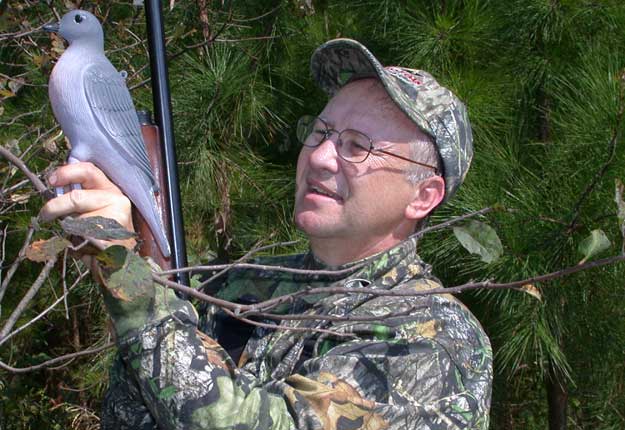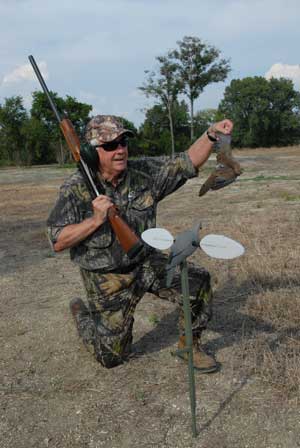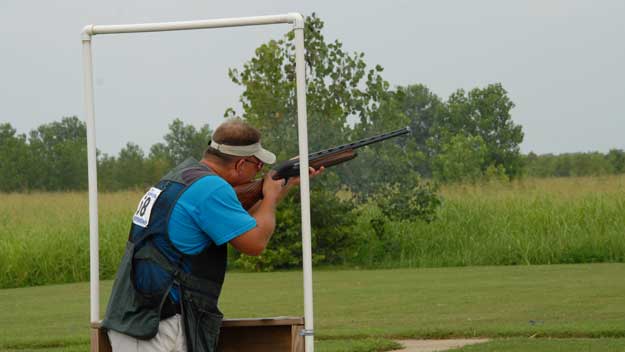
Decoying and calling doves makes for an exciting, fun-filled sport. This tactic allows the hunter to experience the thrills of waterfowl-type hunting, calling and decoying while actually hunting doves. The decoying and calling makes the sport of dove hunting more than a shooting sport and more than a hunting sport, putting it on the same level as duck hunting without the bad weather.
With the proper equipment and knowledge about doves, outdoorsmen can enjoy one of the best wing-shooting sports. Opening day of dove season often can result in a frustrating frenzy of fast shooting, plenty of birds and much spent powder. But after opening day, the wild and timid surviving doves know how to dodge hunters. Dove shooting then becomes dove hunting, an altogether different sport.
After opening day, the sportsman must ask himself:
- where do the doves roost;
- where and when do the doves feed;
- where and when do the doves gravel; and
- where do the doves water?
To learn the answers to these questions, ride the roads and watch the doves along the sides of the roads. If you can determine the birds' routines, then you can begin to answer these questions. To learn about the doves on the land you plan to hunt, also talk to the landowner. Usually a landowner can tell you where and what time he usually sees doves. From this information, you can work out a hunt plan.
To take the most doves, you must position yourself along the routes the doves fly to food, water, gravel, trees, power lines and the roost. Often, just taking a position along the doves' normal flight patterns will provide some good shooting. But many times the doves won't come in close enough to allow the shooter a close-range target. Often, too, doves will loaf that don't want to go to water, gravel or the roost in the hunter's gun range.
 I once found a pond on a farm where doves flew in to drink water late in the afternoon. The farm had had several dove shoots on it during the first three weeks of the season. Although the farm still homed plenty of doves, they had become scattered and very wary. The water provided the best place to concentrate the gray ghosts. However, the birds flew from many directions to the large pond, and only a few of the doves came past the tree where I hid. I had plenty of doves to shoot, but I couldn't get them in close enough to shoot most of the time. So, I began using dove decoys along with a Mojo Outdoors Dove a Flickers (spinning wing dove decoy) to reel the doves in toward me. I used a chair pack that had a stool with a large pack under it that I could carry into the field like a backpack. The decoys and this pack, along with the knowledge that the doves would come in to the water, helped me set up a perfect spot to take those smart doves that had dodged me for the past two weeks.
I once found a pond on a farm where doves flew in to drink water late in the afternoon. The farm had had several dove shoots on it during the first three weeks of the season. Although the farm still homed plenty of doves, they had become scattered and very wary. The water provided the best place to concentrate the gray ghosts. However, the birds flew from many directions to the large pond, and only a few of the doves came past the tree where I hid. I had plenty of doves to shoot, but I couldn't get them in close enough to shoot most of the time. So, I began using dove decoys along with a Mojo Outdoors Dove a Flickers (spinning wing dove decoy) to reel the doves in toward me. I used a chair pack that had a stool with a large pack under it that I could carry into the field like a backpack. The decoys and this pack, along with the knowledge that the doves would come in to the water, helped me set up a perfect spot to take those smart doves that had dodged me for the past two weeks.
After placing the dove decoys out on the limbs of the tree near where I sat, I watched as the elusive doves came in to the pond, spotted my decoys and then banked in to where I hid for some socializing before they took a drink of water. The decoys worked like a charm, luring the socially-minded mourning doves to within gun range. Believing that late-season dove hunting could parallel waterfowl hunting and seeing that decoys worked for doves near water just like they worked for ducks, I wondered if I could call to doves successfully.






























